Cataract Extraction by Phaco-Emulsification
What Is Cataract?
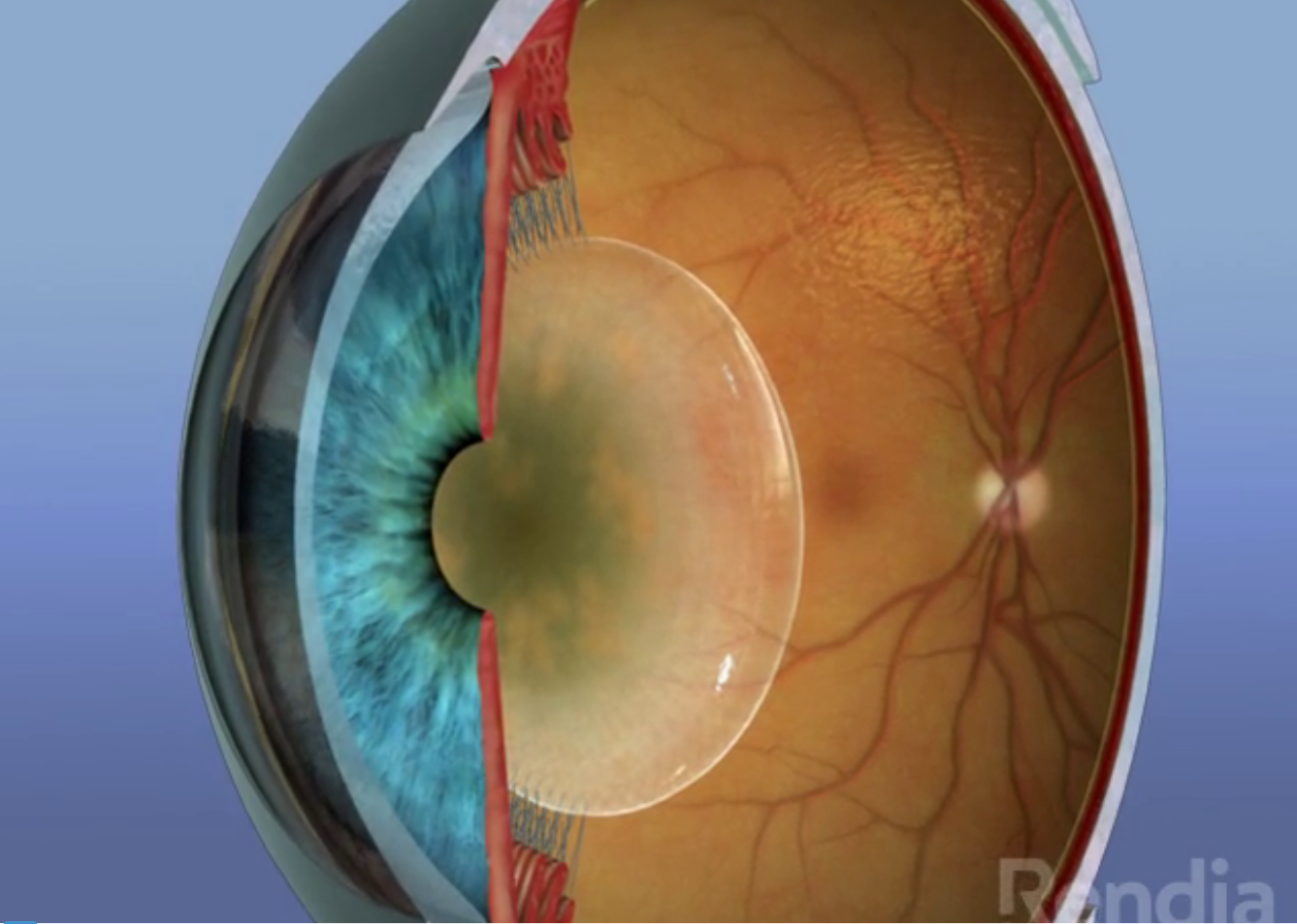
Sight and Normal Eye
Sight is possible with the combination of a healthy eye and brain. Inside the eye, behind the cornea is the coloured part of the eye (iris) with the black hole in the centre (pupil). Behind this is a lens. Light rays pass through the transparent cornea through the pupil and are then focused through the lens onto the retina. In a normal eye, the lens is made of a clear, flexible gel surrounded by the transparent lens capsule. The lens adjusts its curvature to fine focus light rays onto the back of the eye (retina).
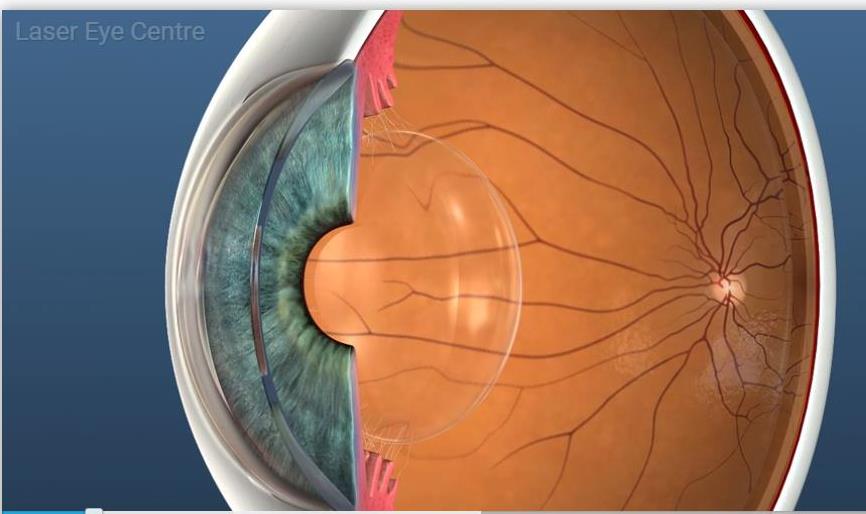
Normal Eye
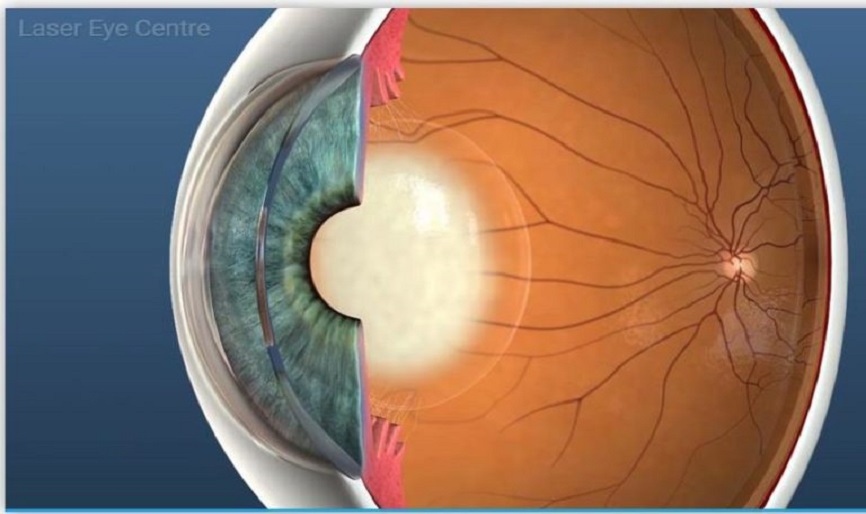
Cloudy Lens
Causes & Symptoms
Most forms of cataract develop in adults, after the age of 40. The normal process of aging causes the lens to harden and become cloudy. This is called age-related cataract and it is the most common type of cataract. Other major causes of cataract include the following:
- Diabetes and injury to the eye (blunt or perforating). Long-term use of systemic steroids can also induce a cataract.
- High exposure to ultraviolet light and environment degradation speeds up the process of cataract development.
- Some babies are born with congenital cataracts, which are hereditary.
Some of the symptoms of cataracts include:
- Dull and fuzzy vision and sometimes double vision
- Glare from bright sunlight or poor vision when viewing oncoming automobile headlights at night
- Photophobia
- Difficulty in performing routine tasks such as reading the newspaper
- Change in colour perception
- Night driving
When should cataract be treated
Among so many patients and ophthalmic workers, there is a misconception that a cataract has to be fully matured and the patient has to be blind before the cataract can be operated on.These days, thanks to advantages and results of Phacoemulsification (see below), a cataract can be done at any time when the reduction in vision interferes with the normal activities of patients, like driving, reading, playing sports, etc. For a cataract patient, the usual eye test charts of opticians, which are known as Snellen charts, are inadequate. There are special charts known as contrast sensitivity charts, which will fabricate the vision of cataract patients in their working environment like driving at night or in bright sunlight. Sitting in the doctor’s or optician’s office with a normal Snellen chart, the patient’s sight could be as good as 80%- 90% while the same patient’s vision drops to 10% whilst driving.
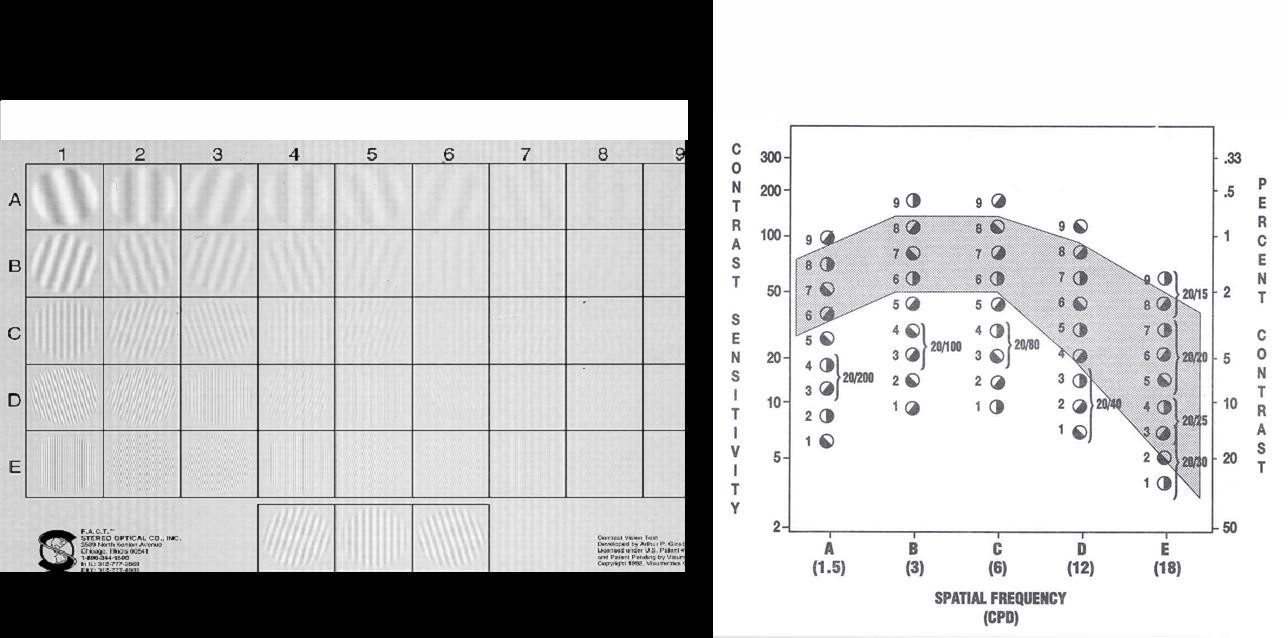
Treatment
Once the lens of the eye becomes cloudy, there is no medication available to treat cataracts. Surgery is therefore the only effective way to remove the cataract or cloudy lens. It is not necessary to wait until the cataract if fully developed or matured as it can be removed in its early stages of development.
In order to understand cataract surgery, it is important to know the basic anatomy of the lens. The lens is like an avocado fruit and the seed is the nucleus (much larger when compared to an avocado fruit which usually occupies 70% – 80% of the size of a cataract). The fruit pulp is the cortex and skin is the capsule attached to the ciliary body by suspensory ligaments (zonules). The average size of the lens is about 1cm or 10mm.
There are 2 main methods of lens extraction
1. Phacoemulsification – The Gold Standard of Cataract Surgery
Phacoemulsification (commonly known as Phaco) is considered as the Gold Standard for cataract surgery using the latest and most advanced surgical techniques and procedures. 96% of surgeons in USA and 90% in Western Europe perform cataract surgery by this method.The procedure is quick, simple and painless. It is carried out through a small (2.5-3mm), self-sealing incision. A high frequency ultra-sonic probe emulsifies or breaks the nucleus into small fragments and sucks the microscopic particles of the nucleus material out of the eye.
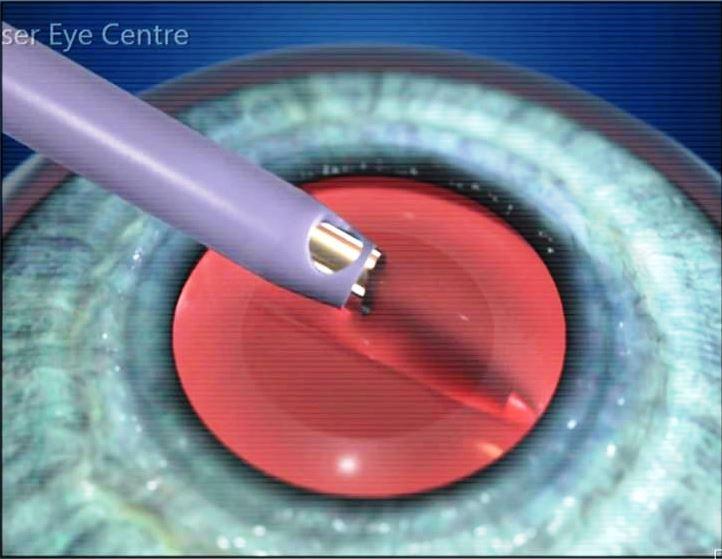
A specially designed foldable intra-ocular lens (IOL) is then inserted, providing a permanent and safe replacement for the natural lens. This surgery is performed under local anesthesia. Laser Eye Centre was the first centre in East and Central Africa to offer this type of surgery.
2. Extra-Capsular Cataract Extraction (ECCE)
An opening is made on the front of the capsule and part of the anterior capsule; the nucleus and the cortex are then removed. A synthetic Intra-ocular lens is implanted in the empty capsular bag to replace the optical power of the removed lens.ECCE is a good operating technique but, the size of the incision has to be larger than the nucleus, thus the incision is about 1cm or 10mm, which gives rise to the following limitations:
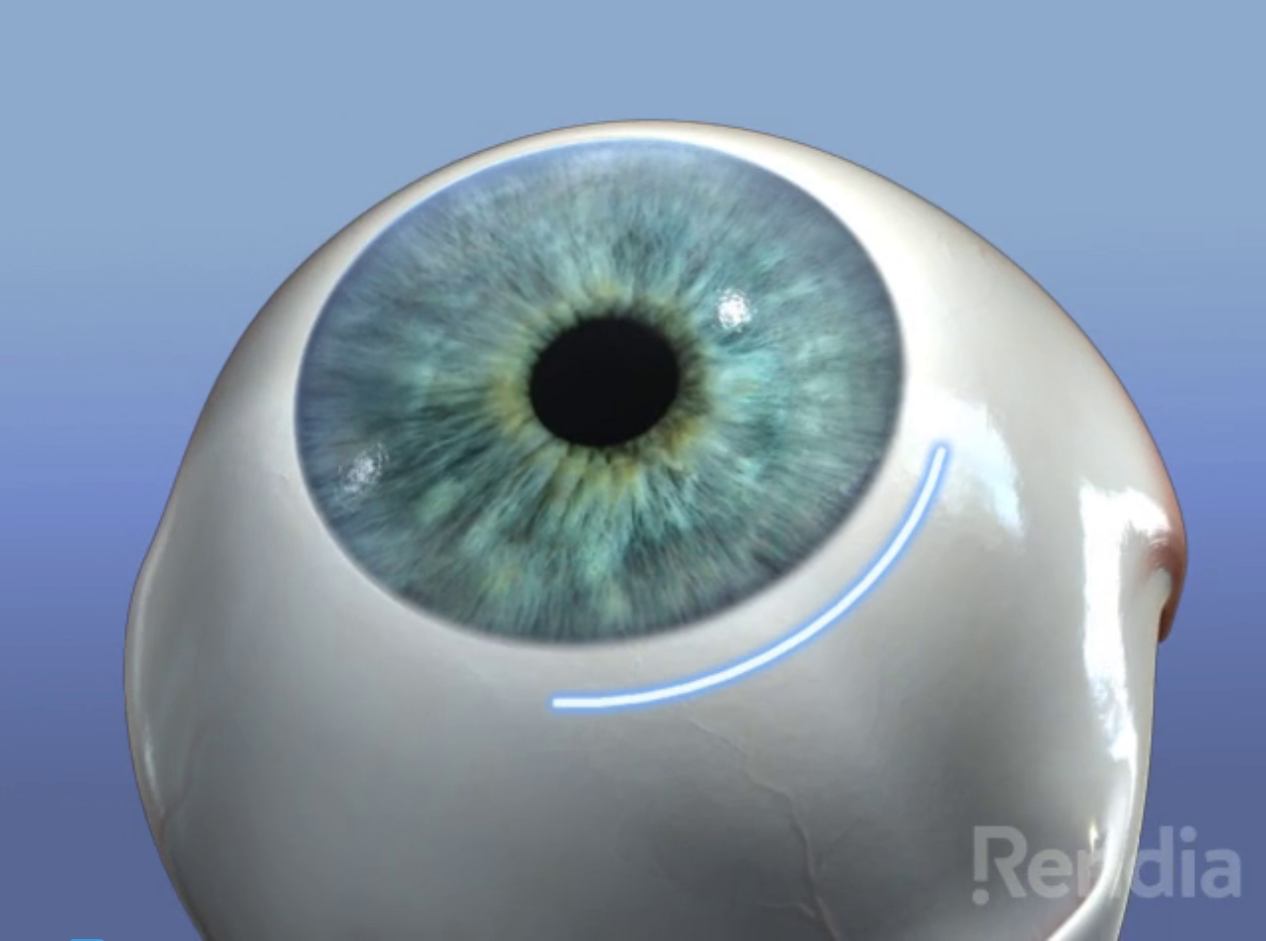
Lengthy recovery period, as the incision is large and the healing period is longer. The patient will need 6 – 10 stitches, therefore stabilizing of vision takes between 6 weeks to 3 months.
Astigmatism due to the large incision, distorts the cornea in most cases.
There is a risk of wound gap and infections.
Patients are restricted from doing physical activities during the first month, like playing golf, driving, sexual intercourse etc. There is also increased postoperative pain due to the surgical trauma of the tissue.
Advantages of Phacoemulsification over traditional Cataract Surgery:
- Patients have improved vision after 2-3 days. Patients can resume their daily physical activities almost immediately, such as driving etc
- There is less trauma to the eye so Postoperative inflammation is minimal and astigmatism or distortion of the cornea is reduced.
- Patients wearing glasses before the operation will see much better without glasses after the Cataract operation.
- Further advances in Cataract surgery known as the Micro Incision Phaco means the size of the incision is reduced a further 25% from 3.2mm to 2.4 mm.
What is an intraocular implant?
When a cataract has been removed, a lens is put in place of the existing cataract and this is known as an intraocular implant. The quality and manufacturing of this implant is very important.
Various choices of intraocular implant:
When a cataract has been extracted, one has various choices of intraocular implant.
The choice of implant depends upon the need of the patient:
- Mono-Focal Implant - both eyes can be corrected for far vision and patient has to use reading glasses.
- Mono-Vision Implant - whereby one eye predominantly can see far and the other eye can see near. This is suitable for housewives or patients who do not drive at night.
- Premium Implant - it can treat pre-existing astigmatism. (An astigmatic eye has an uneven surface — the cornea can be more curved or steeper at one axis than others. This results in having more than one focal point and of course blurred vision.) A special type of toric implant is put in the eye to correct astigmatism.
- Multi-Focal Implant - This includes Bi-focal or Tri-focal implant. This gives you reasonable vision for far and abit vision for near. These are good implants but some patients see a glare at night time and suffer when illumination in the room is not good. Therefore, we do not recommend this implant for a person who does night driving or a sports personality.
- Extended Focus Implant - it is perhaps the best implant in my opinion. It is a new implant whereby we correct patients for far and near vision and give reasonable far and near vision. With this type of lens, a patient can manage to drive at night and also not have any difficulty in a room with poor illumination.
Laser eye Centre Ltd. is the first Centre in this part of world that started doing extended focus implant.
What Will Your Cataract Treatment Include?
- Pre-op assessment carried out by our highly experienced clinical team.
- Final consultation and assessment undertaken with your surgeon.
- Day Surgery at a private clinic with all facilities included.
- Highest quality, biocompatible Intra Ocular Lens.
- All post-operative consultations and accompanying medication for the period of recovery.
The Surgery
On the Day of the surgery
Before the operation, preoperative counseling and routine examinations for diabetes, heart disease etc. is done. Preoperatively, ultrasound keratometry and biometry to calculate the power of the implant that is needed are carried out:
Factors determining the outcome of cataract surgery
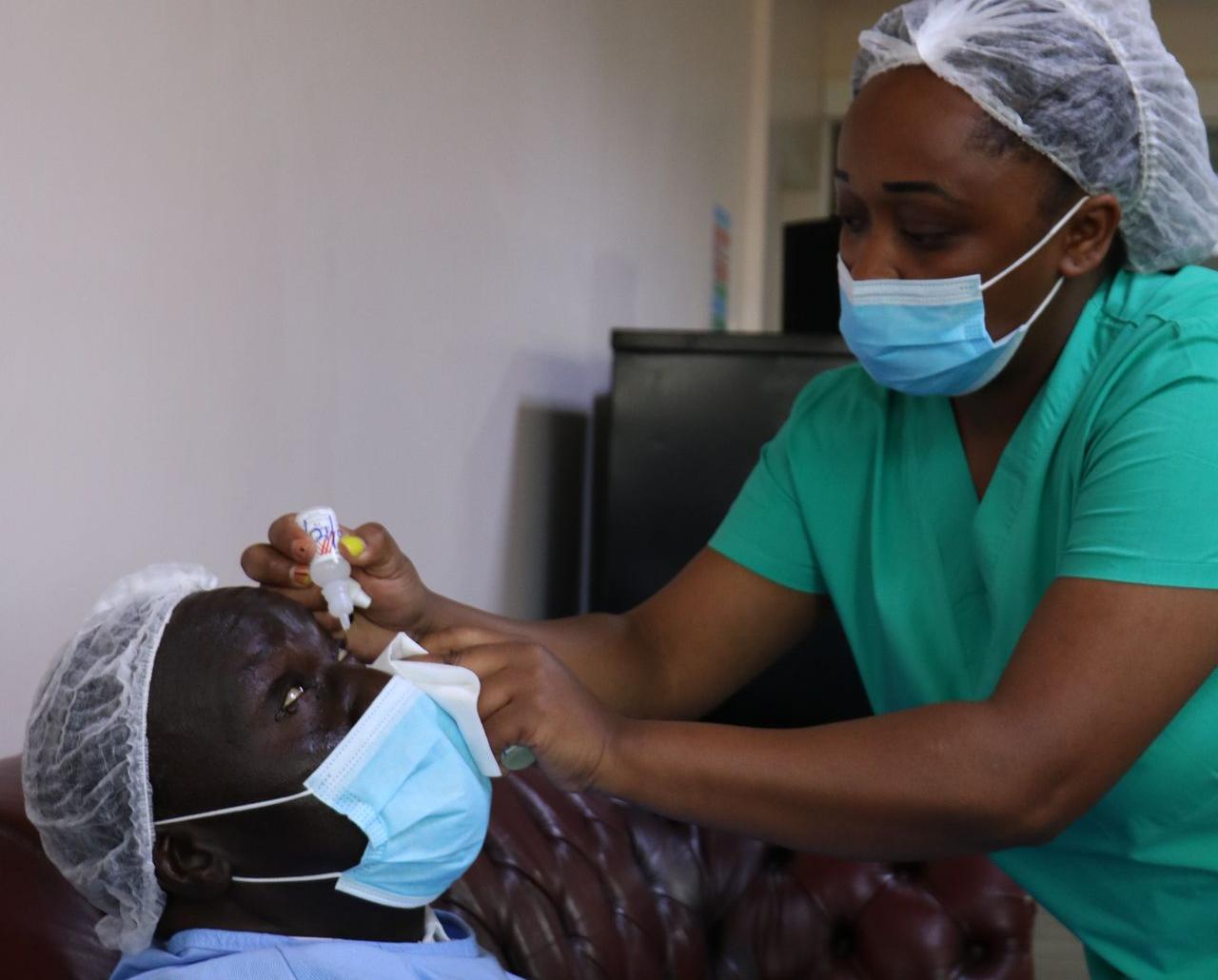
1. Expert surgical skills of the surgeon. Before agreeing to be operated on by a surgeon, one should ask the doctor whether Phacoemulsification is his preferred method of surgery or if he does this for a few patients only. At Laser Eye Centre, 99% of the cataract operations carried out are by Phacoemulsification
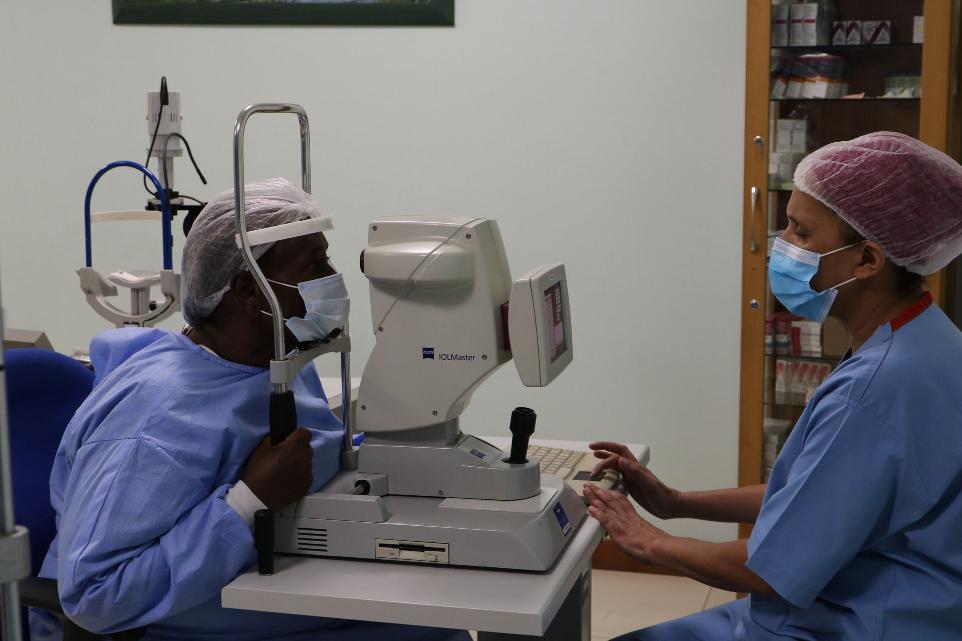
2.The IOL Master: As mentioned before, when a cataract is removed, the old lens has to be replaced by a new, artificial lens of an equivalent power. At the Laser Eye Centre , the Intra Ocular Lens Master is used to determine the power of the lens that needs to be implanted in Cataract patients. The curvature of the cornea and the depth of the anterior chamber are all measured at one go. The Laser Eye Centre is the only centre in East and Central Africa that has this machine which is considered as a Gold Standard.
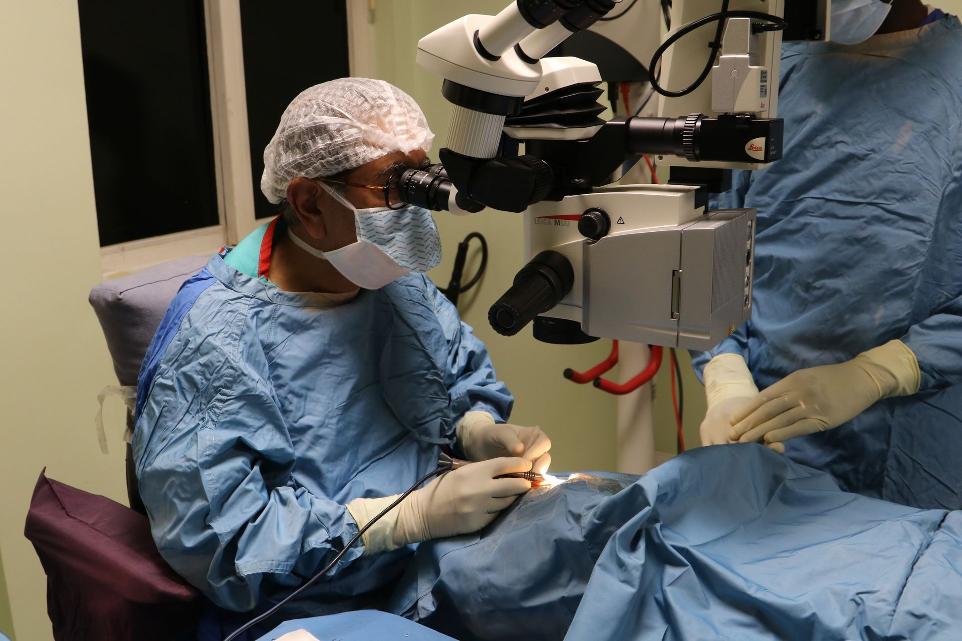
3. State of the art Phacoemulsification machine: At Laser Eye Centre, we have got the latest Surgical Design Ocusyst During the operation, Alcon Balanced Salt Solutions Plus (BSS+) is used which is similar to the intra ocular fluid so there is less tissue reaction or damage, giving results that are far superior to other commonly used solutions like Hartman or Norman Saline or Balanced salt solution. em, which is considered one of the best Phaco machines of its kind.
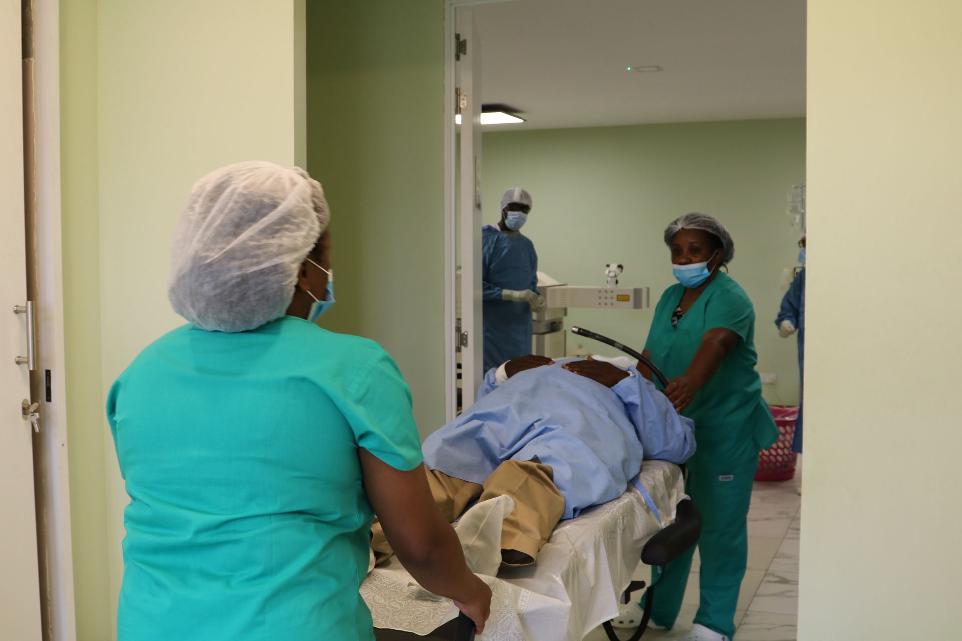
4. The quality of Intra Ocular Implant: In spite of a successful cataract operation, if a high quality Intra Ocular Implant is not used, then the patient could have complications after a few months or years, i.e. implant causing recurrent intra ocular inflammation. The Laser Eye Centre is the only centre that uses Acrysof IQ Alcon (USA) implants, which are considered one of the best Intra Ocular Implants in the world. Each Acrysof lens is tested under electron microscope and is approved by the FDA (USA) and has European Certification.

5. Visco-elastic – Cohesive and Dispersive. While performing the surgery a jelly known as Visco-elastic is used to protect the intra-ocular tissue. At the Laser Eye Centre, we use Duovisc Alcon visco-elastics, which are of very high quality and better than methylcellulose, available in some third world countries are used by some mission and charitable hospitals. During the surgery, ultrasonic waves are used to break down the cataract. The Visco-elastic protects the other delicate structures around the lens from being affected by the ultrasonic waves. Duovisc has both cohesive and dispersive properties which is what is needed during Phacoemulsification.

6. During the operation, Alcon Balanced Salt Solutions Plus (BSS+) is used which is similar to the intra ocular fluid so there is less tissue reaction or damage, giving results that are far superior to other commonly used solutions like Hartman or Norman Saline or Balanced salt solution.
Disposables
At the Laser Eye Centre , all knives and drapes are disposable. Sometimes patients compare the cost of having surgery. It is imperative for the patient to have knowledge of the type of Intra Ocular Lens, disposables and Phaco machine used in their surgery. All the ocular disposables like the IOL, sutures, Balanced Salt Solution Plus, Visco-elastic, Phacoemulsification machine, operation microscope and Vacuum Autoclave have international certification such as CE or ISO 9002 and are used in countries where good surgical techniques are important.
Latest Developments In Cataract Surgery
RayOne EMV LENS:
What is RayOne EMV?
RayOne EMV is an enhanced mono-focal IOL with an optical design that many patients find provides a greater range of clear vision compared to traditional mono-focal IOLs. While a traditional mono-focal IOL may only provide clear distance vision, RayOne EMV can provide you with functional intermediate vision for activities such as using a computer or cooking. About one in three patients that receive RayOne EMV targeted to achieve good distance vision in both eyes find that they’re completely spectacle independent for near tasks as well, such as using a mobile phone or reading a menu.
RayOne EMV has a unique optical design that provides uninterrupted vision throughout its focal range, diminishing the Not Sharply Focused Zone (NSFZ). It is also designed to offer clearer vision in low-light conditions1 and has the potential to increase your quality of vision for near activities compared to traditional mono-focal lenses.
Features & Benefits
- Smoother, blended transition between the dominant and non-dominant eyes when compared with standard mono-focals, maintaining binocular stereo acuity and reducing asthenopia.
- High quality spectacle-free distance vision.
- Reduced pupil dependency, for optimized performance under low light conditions.
- Reduced sensitivity to decentration and tilt compared to other IOL designs.
- Complements the eye’s natural positive spherical aberration.
- Bilateral emmetropia can be targeted
RayOne Trifocal
Our trifocal optic improves intermediate visual acuity, enabling patients to feel more comfortable transitioning from near to distance activities.
Features & Benefits:
- Aberration-neutral aspheric optic for visual quality and acuity in all light conditions
- Amon-Apple enhanced square edge for minimal PCO 1.7% at 24 months
- Based on proven haptic technology for excellent stability
- Zero glistening
- Biocompatible hydrophilic acrylic material with a long safety record - over 7.5 million lenses sold since 2003
- Fully preloaded across the entire power range
Restore Multi-focal Intraocular Lens:
The traditional intraocular lens is designed to give the patient clear distance vision but it does not have the accommodating/focusing power of the natural lens. As a result glasses will be required for near vision tasks such as reading. The AcrySof ReSTOR lens is a multi-focal intraocular lens that allows clear distance vision just like the traditional lenses, but also enables predictable near vision and functional intermediate vision as well. Within the central 3.6mm of the AcrySof ReSTOR IOL there is an optic zone made up of a series of apodized diffractive steps. Apodization creates a smooth transition of light between the distance and near focal points and results in a blended transformation between distance and near vision, reducing the potential for glare, halos and other visual disturbances.
Laser Eye Centre is the first centre in East and Central Africa to offer its patients the ReSTOR lens.

Acrysof Lens
The type of foldable Intra Ocular Implant which is used by us at the Laser Eye Centre is Acrysof* (Alcon USA) which is perhaps the best foldable implant. Acrysof is the most used foldable Intra Ocular Implant in the USA, Japan and Europe at the moment.
What is an Effective Lens Position (E.L.P.)?
Despite doing all modern calculations, when a cataract is removed, it is 7mm thick and implant is 2.5mm thin.
Once an implant settles in the bag, there is a contraction of the patient’s bag, the final destination of implant will be the same place, either slightly forward or backward and it will change the small power of the eye.
Therefore, pre-operative estimation is only the guideline. About 5% of patients will require a touch up in order to have a completely spectacle-free vision. Touch up is by C-Ten “No-Touch No-Cut” Laser Vision Correction.
